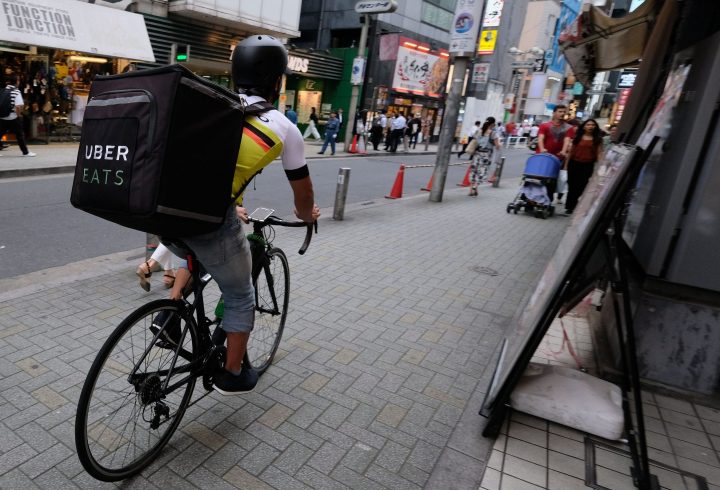
Food delivery apps bring business, but are they good for business?
Food delivery apps bring business, but are they good for business?

Amazon has acquired a stake in Deliveroo, one of Europe’s leading food delivery services, gaining a chunk of a growing segment of today’s economy: apps like Grubhub, Postmates and Uber Eats that handle ordering and delivery of restaurant meals to people at home and work. But while these third-party apps bring in business for restaurants, the apps are also adding work for them — and changing their business models.
At Brgr restaurants in Pittsburgh, manager Kassandra Scribner said the delivery services that bring wings and fried pickles to customers are “super great for the business.” She said the apps bring in a lot of revenue from people who probably wouldn’t be going out to eat at all.
Delivery through those apps represents a third of the business at the restaurant’s six locations. But those orders require some planning.
“The highest quality is in that eat-in moment when it comes out of the oven or out of the kitchen right to the table,” said Christopher Muller, a hospitality professor at Boston University.
That means at Brgr, burgers are undercooked so they arrive at the right temperature. Salads are delivered with the dressing on the side to prevent soggy greens.
Muller said preparing and packaging meals differently can be a burden. Restaurants have to sometimes add extra staff. And the payoff ? Not really there.
“It’s a plague on the business. Third-party delivery companies take anywhere from 20 to 30% of the revenue,” he said.
Still, this is a growing industry, said Hannah Spencer, a food service analyst with Mintel. Most orders through apps like DoorDash and Grubhub are made by urban millennials. And because of the frequency of their orders, Spencer said, “they are very valuable customers. “
So some restaurants have designated pick-up windows for those delivery apps. Chipotle even has a dedicated food prep line for delivery orders. Larger businesses can afford to do that or work out exclusive deals with a third-party operator like the one McDonald’s has with Uber Eats, said Alex Susskind with Cornell’s Institute for Food and Beverage Management. It may be harder for smaller restaurants, which he said are operating at a loss.
“So to say, ‘Oh, well, you know, I’ll make it up in volume,’ you know, zero times zero is zero. You’re not going to make up a loss in volume,” Susskind said.
But, he said, as competition among the apps heats up, costs will go down. And restaurants could start to see some profits from those orders.
There’s a lot happening in the world. Through it all, Marketplace is here for you.
You rely on Marketplace to break down the world’s events and tell you how it affects you in a fact-based, approachable way. We rely on your financial support to keep making that possible.
Your donation today powers the independent journalism that you rely on. For just $5/month, you can help sustain Marketplace so we can keep reporting on the things that matter to you.


















